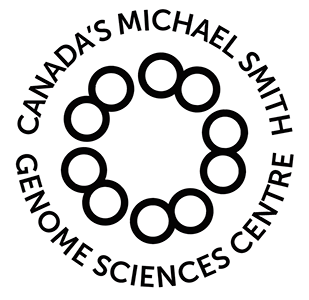 buy artwork
buy artwork
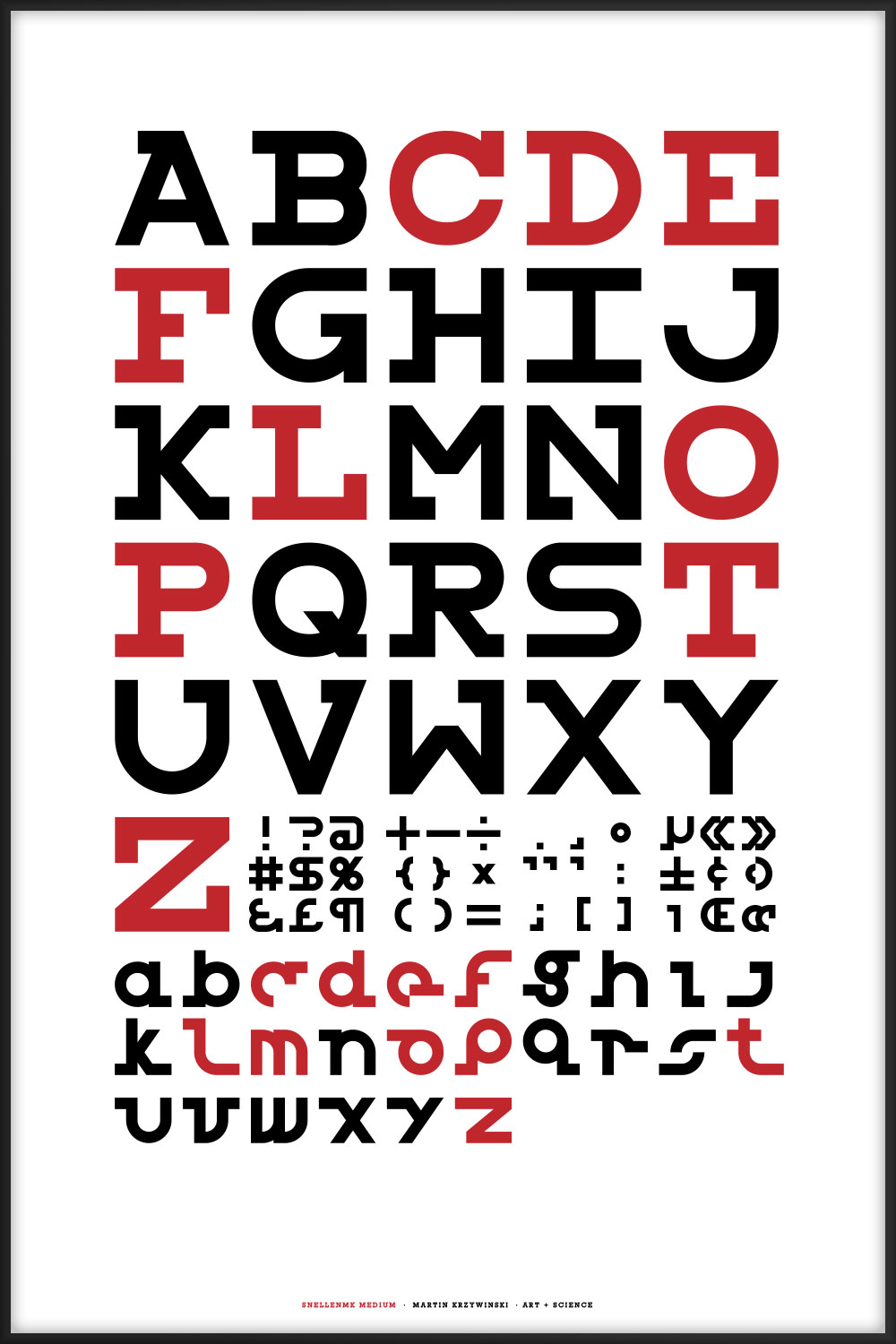
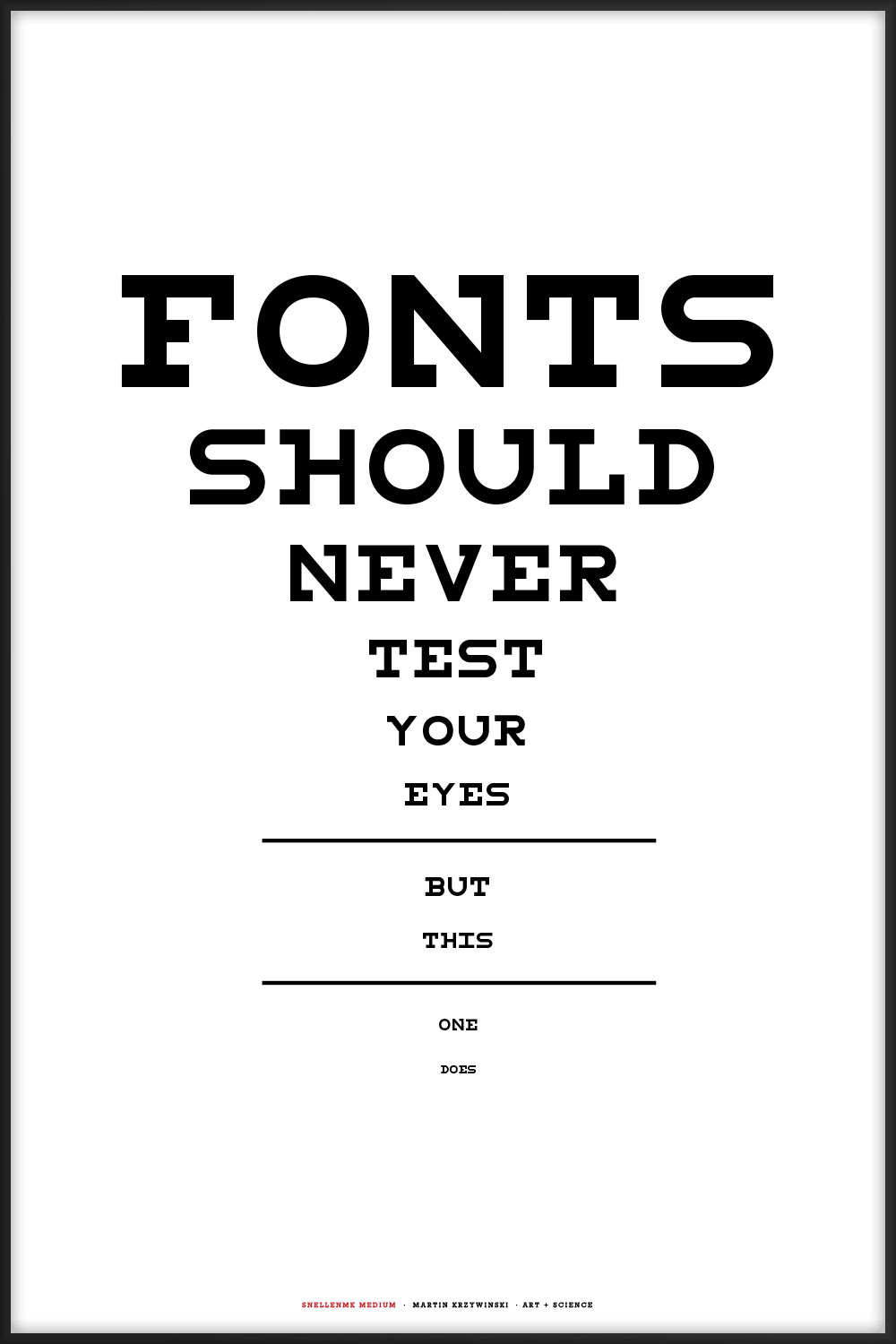
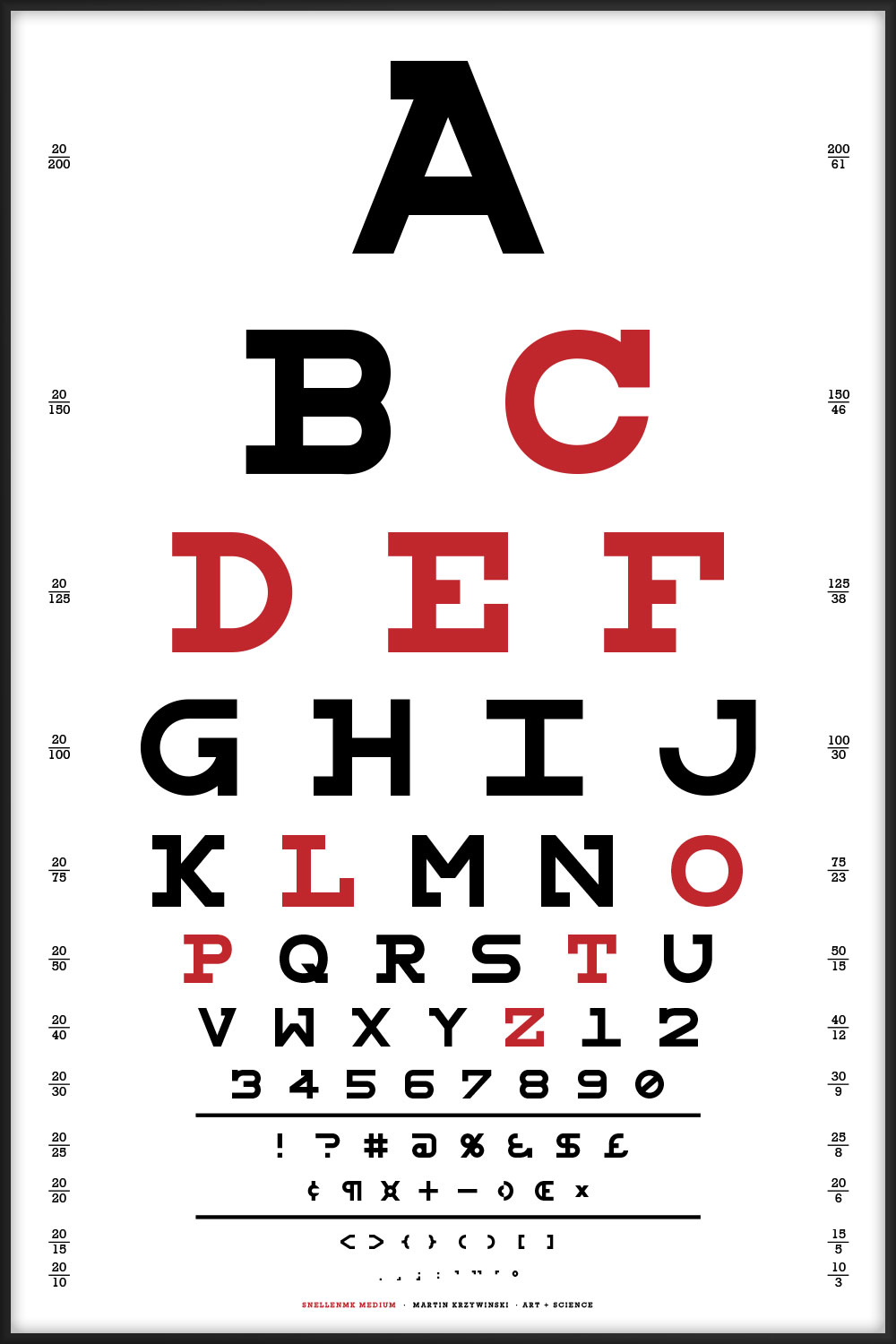
Snellen Optotype Font with Upper and Lowercase characters
contents
In the process of designing my Snellen Eye Chart typographical posters, I came across the Snellen font by Andrew Howlett. I wasn't happy with all the letters, so I made attempts at giving the font an update. I call this redesign "Snellen MK", to avoid conflict with Howlett's "Snellen".
Not being a font designer, I will likely get myself into trouble.
While making my Snellen chart series, I entered the rabbit hole of optotype fonts ... and I can't get out!
 buy artwork
buy artwork

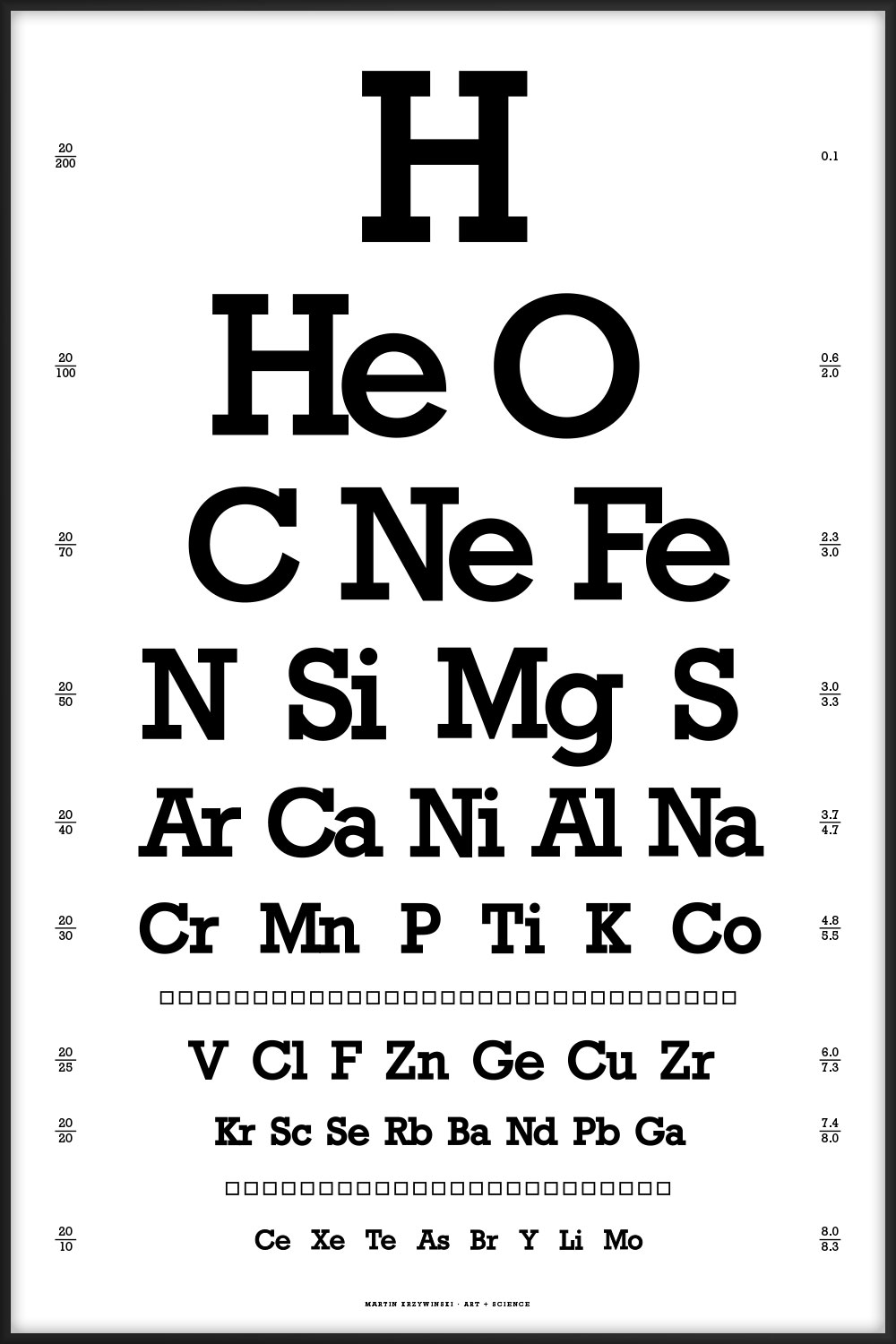
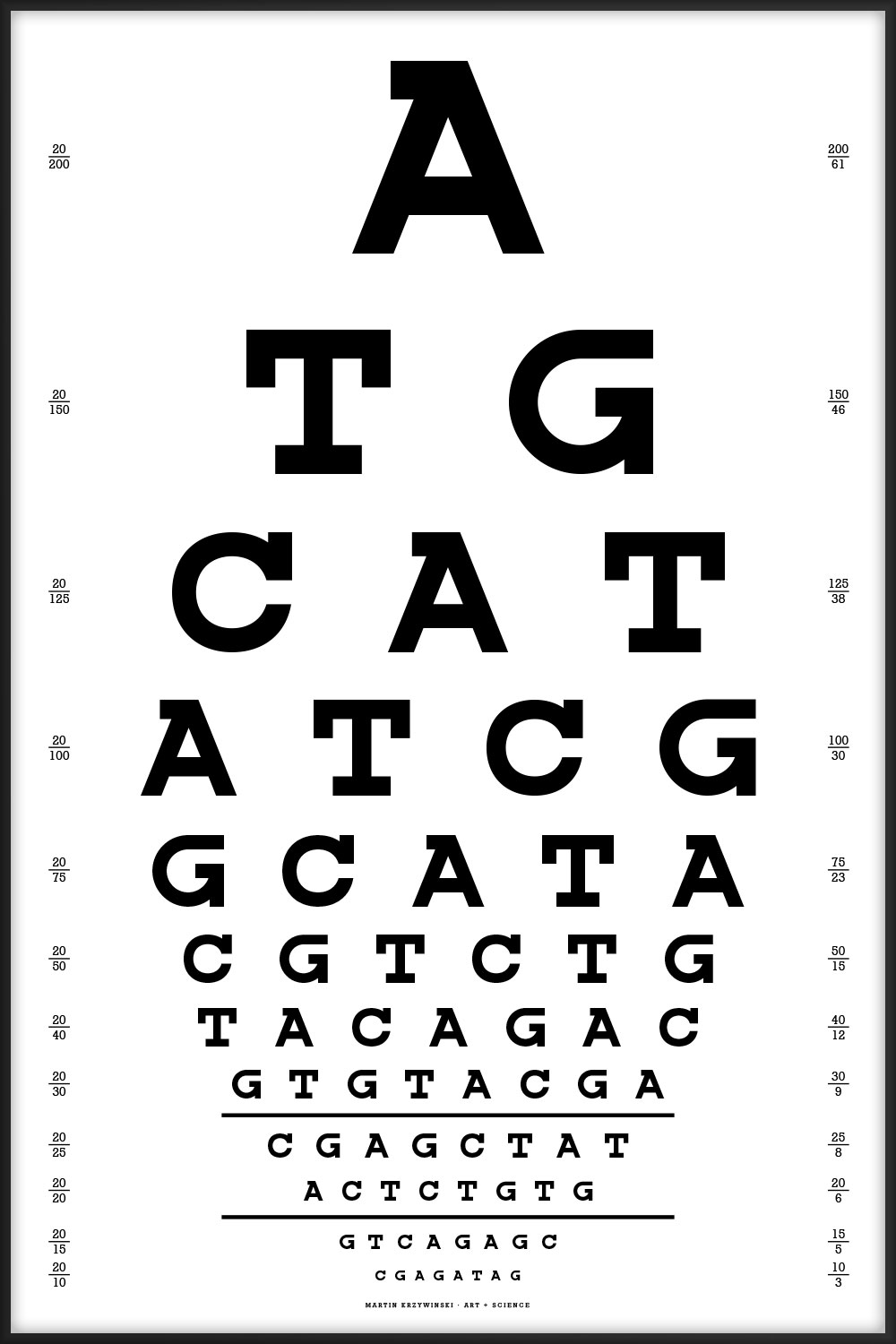
The charts don't necessarily use the latest version of my Snellen font design, which fluctuates as my mood about some of the letters changes.
The optotype requirement is that letters be designed on a 5 × 5 grid, and have constant stroke width. This means that both lower and upper case letters need to share the grid and stroke. To stay compatible with the eyechart paradigm, letters should be as obvious as possible.
Lorrie Frear's article What are Optotypes? Eye Charts in Focus is a great read about optotypes and eye charts.
The uppercase letter design uses Herman Snellen's original chart as inspiration.
I have modified the design by Andrew Howlett (see below) for some letters. All the changes are relatively minor: more serifs and consistent stroke width for bars on R and K.
The lowercase characters should be considered experimental.
The progress of my redesign is shown below. I would greatly appreciate feedback and suggestions!
The distribution contains both Andrew's version and my redesign.
v7.002 11-Jul-2019 — Download SnellenMK optotype font
If I ever get back to this project, the next changes will be the suggestions from Tomasz.
Tidied all letter forms with Fontlab 6.

Fixed g and e. Thanks to Makeesha Fisher for suggestions.

Adjusted serifs on f, j, l, o, t to extend the full width of the grid. Added a lot more symbols.

Added lowercase, digits and symbols.

Adding digits.

I'm exploring the lowercase characters. I don't know what I want to do with them. Make this into a more standard font in which lowercase letters are smaller, so that letters can fit their roles clearly when text is set in sentence case, or fill out the full optotype grid.

Flushed out some inconsistencies in the uppercase characters. Added serifs to more letters.
Now all the letters occuppy the full 5 × 5 grid, including the I, whose serifs were widened to allow this. While this new uppercase I isn't as pretty as the old one, it makes the entire typeface more consistent to its optotype roots.
Still struggling with the G. In the original version, the descending stroke was cut off in the middle of a grid, which I didn't like.
The S has been fixed—thanks to Elanor Lutz for feedback.
I've color coded the characters slightly differently, drawing attention to ones that I feel need more thought.
The lowercase characters aren't color coded (yet) because ... most of them need help. Primarily, I'm vacillating between making them fill the full size of the 5 × 5 square, just like the uppercase characters, and keeping them confined to a 4 × 4 square, which incurs loss of legibility. If I make the letters the same size, it will be impossible to distinguish lowercase and uppercase characters some cases (e.g. c, i). Perhaps this is desired?

First attempt at lowercase characters.

Propensity score weighting
The needs of the many outweigh the needs of the few. —Mr. Spock (Star Trek II)
This month, we explore a related and powerful technique to address bias: propensity score weighting (PSW), which applies weights to each subject instead of matching (or discarding) them.

Kurz, C.F., Krzywinski, M. & Altman, N. (2025) Points of significance: Propensity score weighting. Nat. Methods 22:1–3.
Happy 2025 π Day—
TTCAGT: a sequence of digits
Celebrate π Day (March 14th) and sequence digits like its 1999. Let's call some peaks.

Crafting 10 Years of Statistics Explanations: Points of Significance
I don’t have good luck in the match points. —Rafael Nadal, Spanish tennis player
Points of Significance is an ongoing series of short articles about statistics in Nature Methods that started in 2013. Its aim is to provide clear explanations of essential concepts in statistics for a nonspecialist audience. The articles favor heuristic explanations and make extensive use of simulated examples and graphical explanations, while maintaining mathematical rigor.
Topics range from basic, but often misunderstood, such as uncertainty and P-values, to relatively advanced, but often neglected, such as the error-in-variables problem and the curse of dimensionality. More recent articles have focused on timely topics such as modeling of epidemics, machine learning, and neural networks.
In this article, we discuss the evolution of topics and details behind some of the story arcs, our approach to crafting statistical explanations and narratives, and our use of figures and numerical simulations as props for building understanding.

Altman, N. & Krzywinski, M. (2025) Crafting 10 Years of Statistics Explanations: Points of Significance. Annual Review of Statistics and Its Application 12:69–87.
Propensity score matching
I don’t have good luck in the match points. —Rafael Nadal, Spanish tennis player
In many experimental designs, we need to keep in mind the possibility of confounding variables, which may give rise to bias in the estimate of the treatment effect.

If the control and experimental groups aren't matched (or, roughly, similar enough), this bias can arise.
Sometimes this can be dealt with by randomizing, which on average can balance this effect out. When randomization is not possible, propensity score matching is an excellent strategy to match control and experimental groups.
Kurz, C.F., Krzywinski, M. & Altman, N. (2024) Points of significance: Propensity score matching. Nat. Methods 21:1770–1772.
Understanding p-values and significance
P-values combined with estimates of effect size are used to assess the importance of experimental results. However, their interpretation can be invalidated by selection bias when testing multiple hypotheses, fitting multiple models or even informally selecting results that seem interesting after observing the data.
We offer an introduction to principled uses of p-values (targeted at the non-specialist) and identify questionable practices to be avoided.
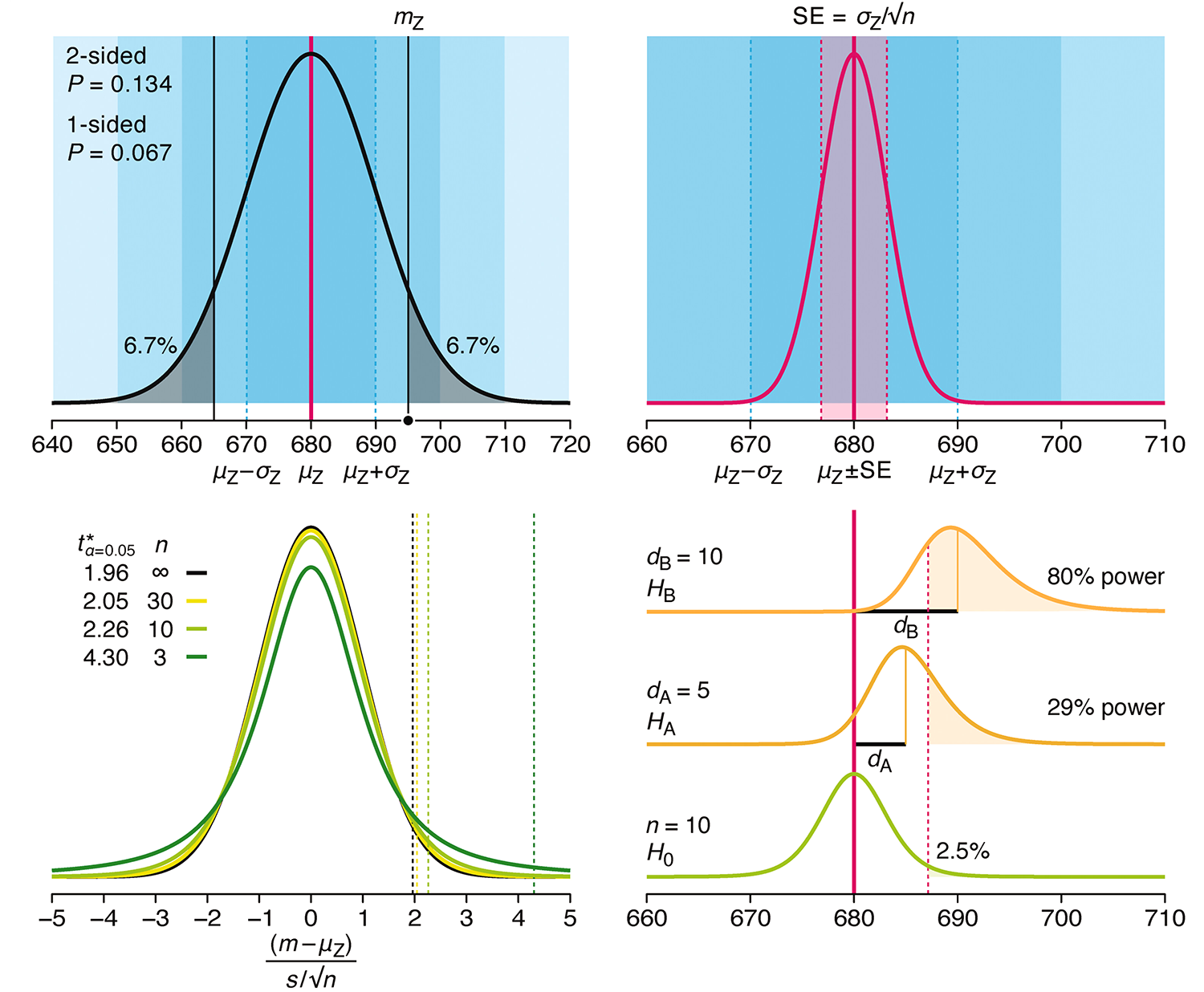
Altman, N. & Krzywinski, M. (2024) Understanding p-values and significance. Laboratory Animals 58:443–446.
Depicting variability and uncertainty using intervals and error bars
Variability is inherent in most biological systems due to differences among members of the population. Two types of variation are commonly observed in studies: differences among samples and the “error” in estimating a population parameter (e.g. mean) from a sample. While these concepts are fundamentally very different, the associated variation is often expressed using similar notation—an interval that represents a range of values with a lower and upper bound.
In this article we discuss how common intervals are used (and misused).
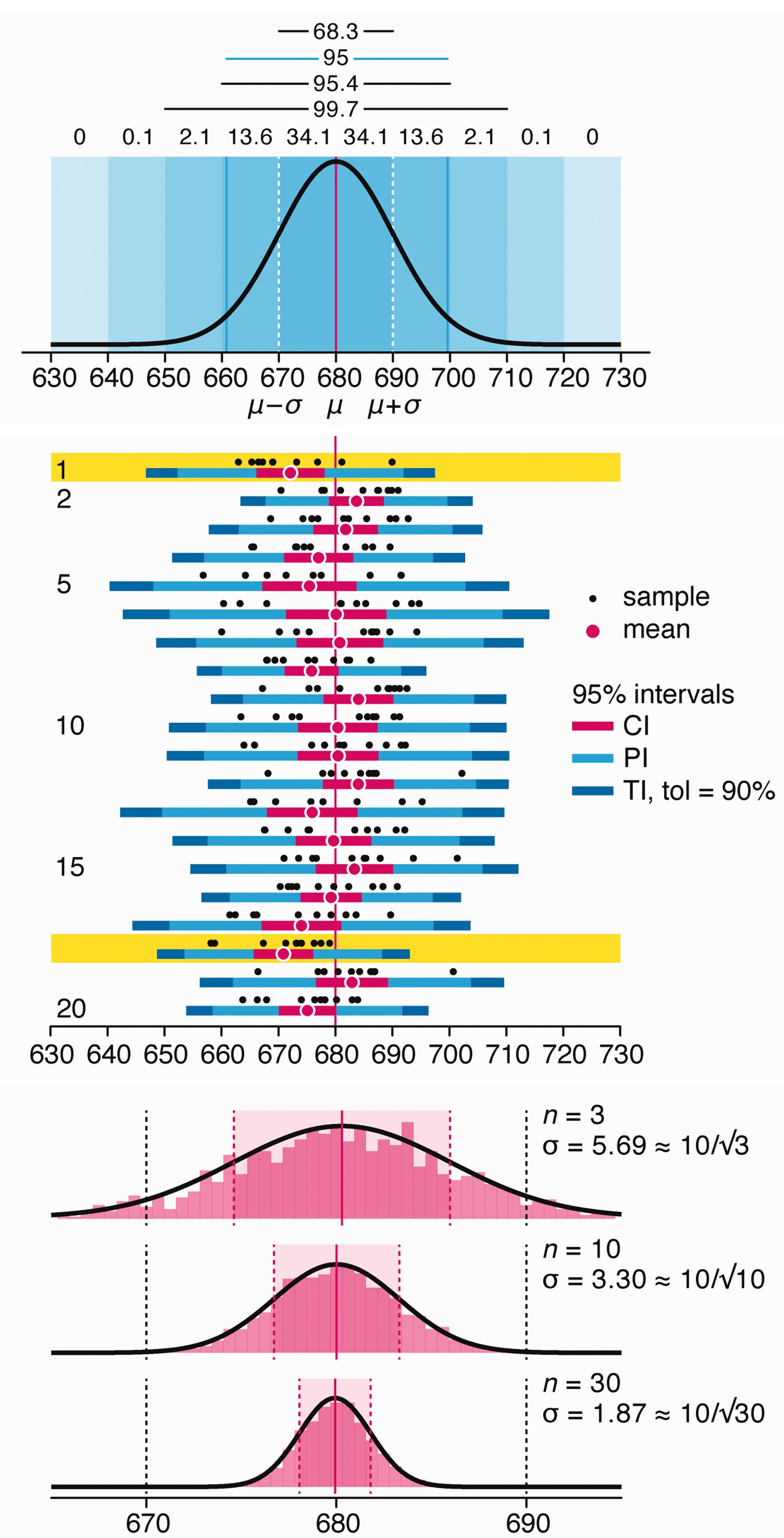
Altman, N. & Krzywinski, M. (2024) Depicting variability and uncertainty using intervals and error bars. Laboratory Animals 58:453–456.
